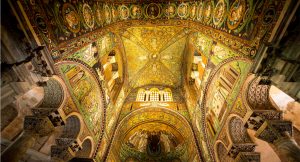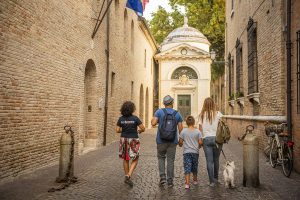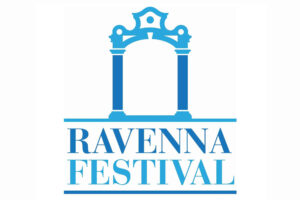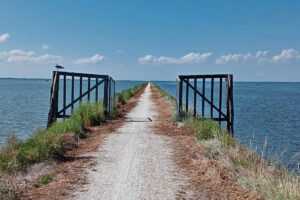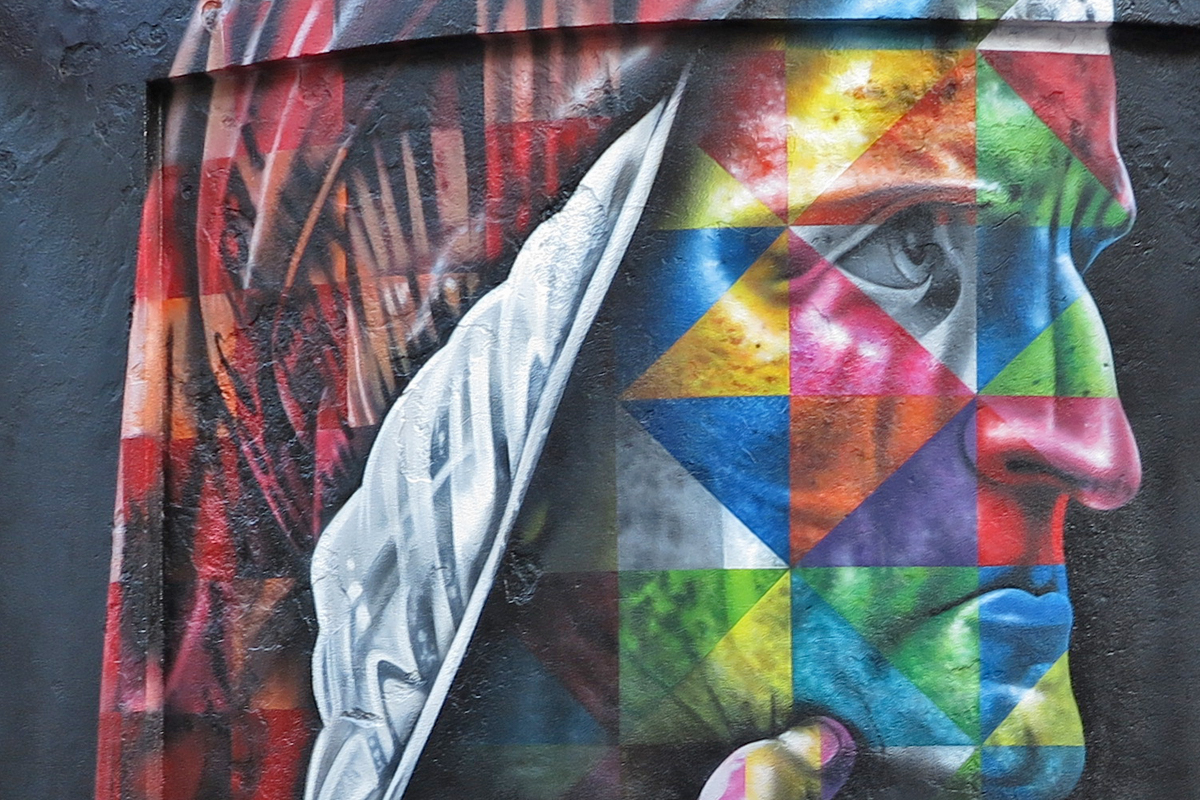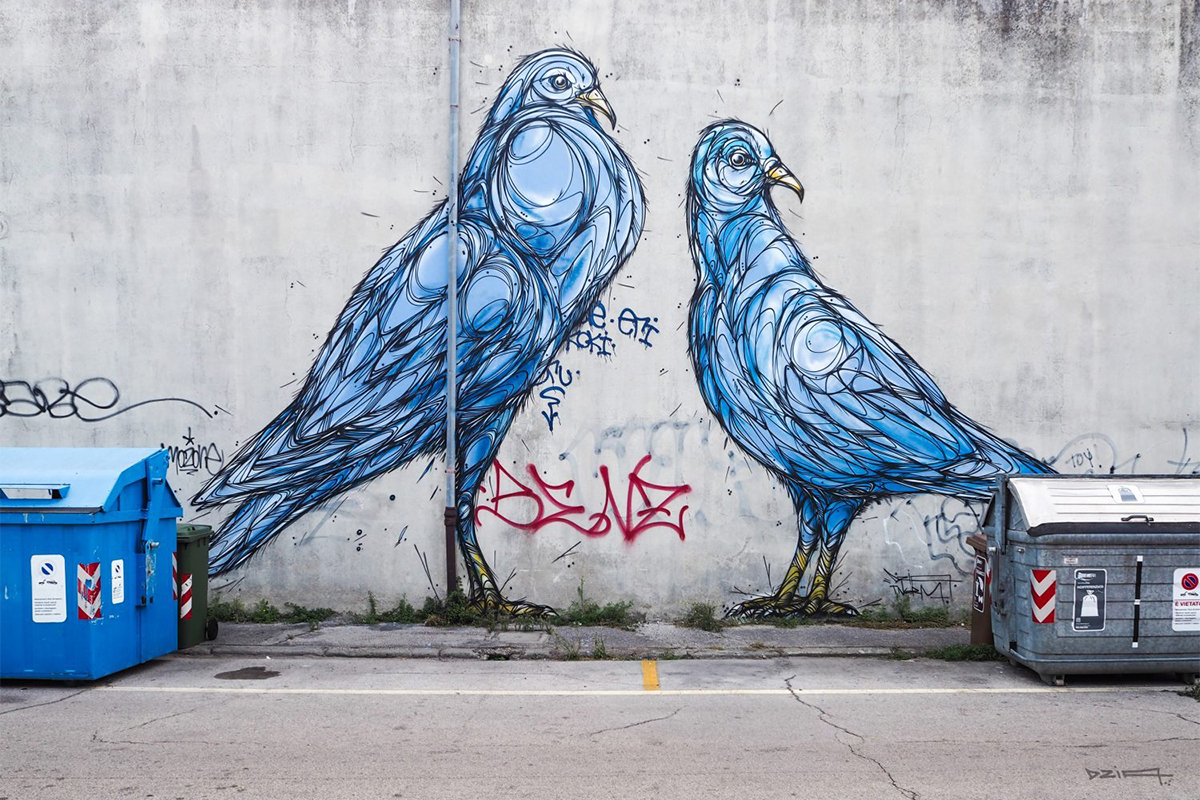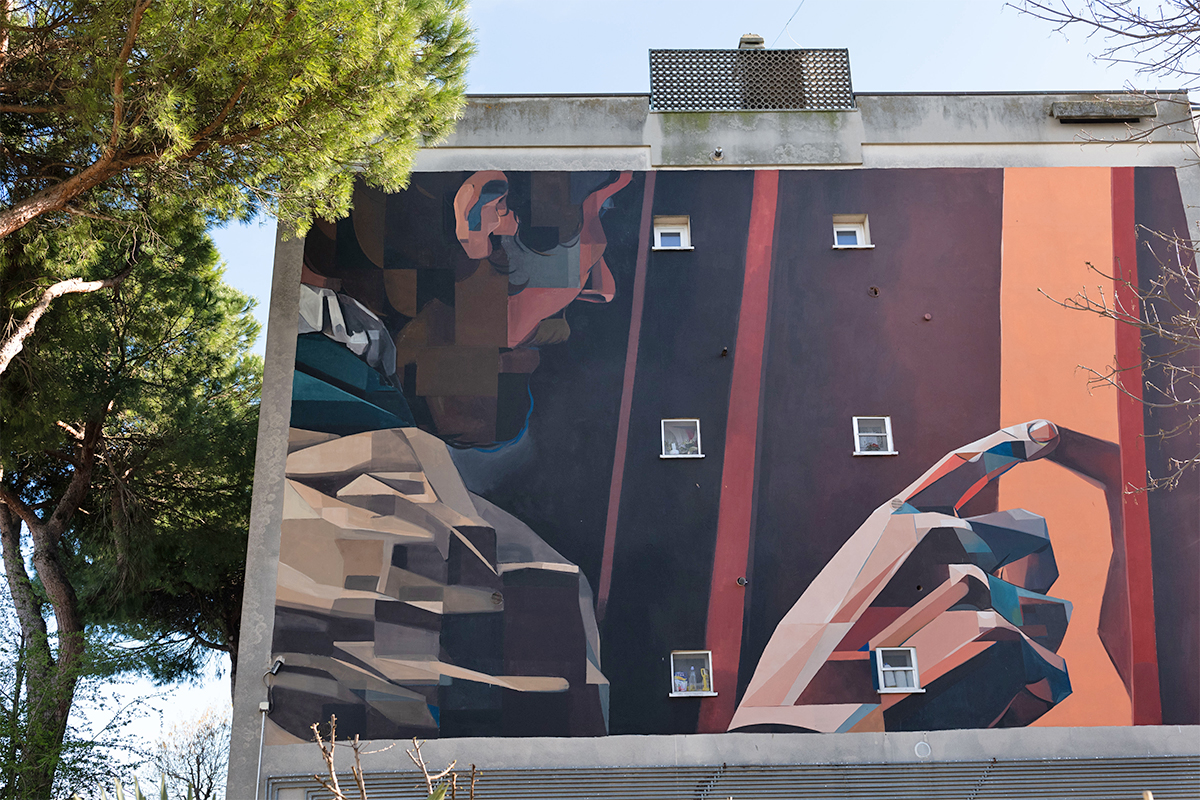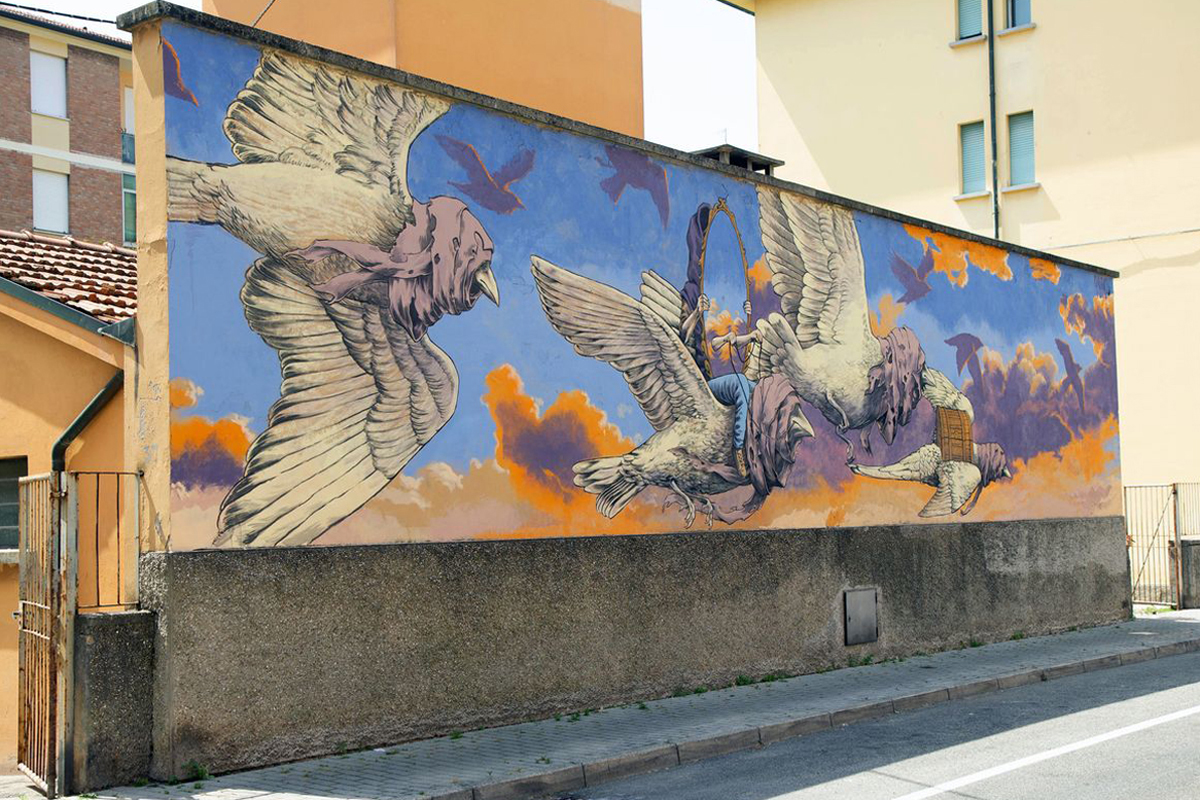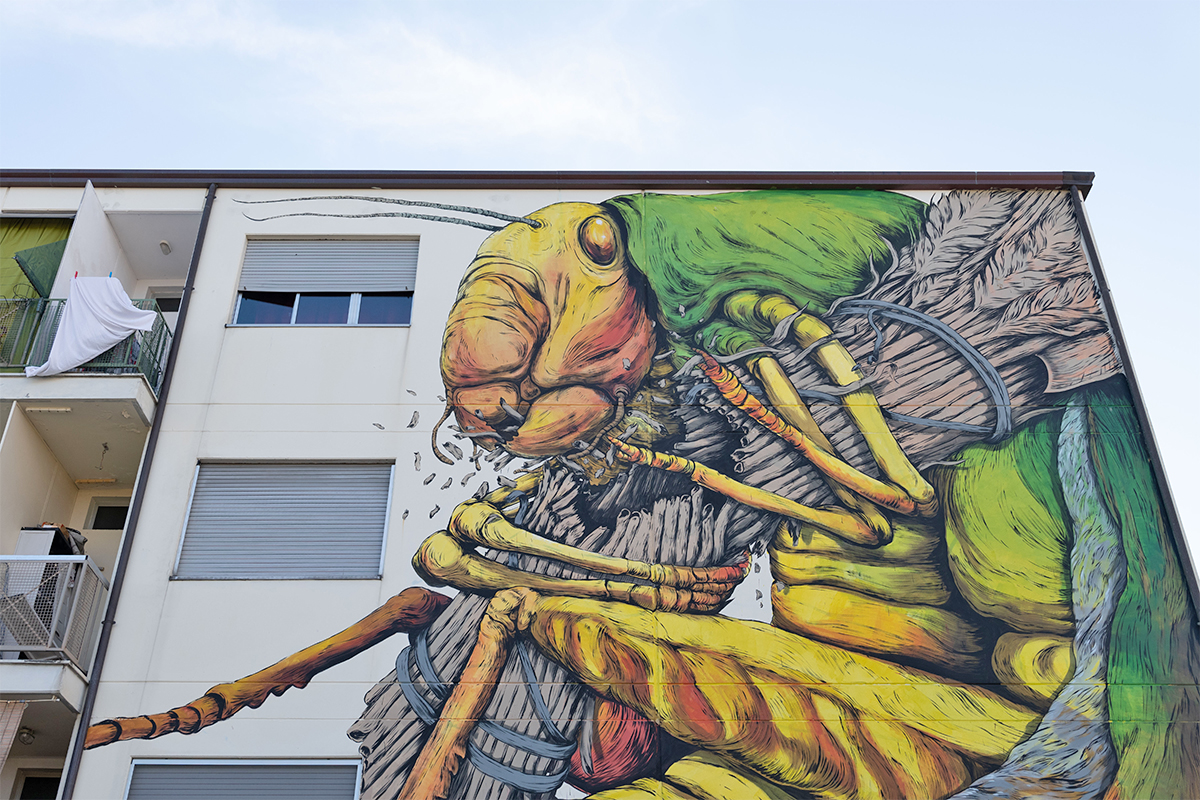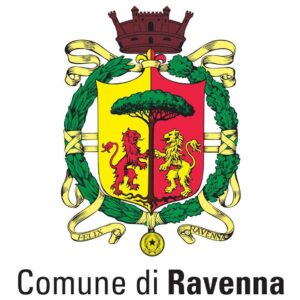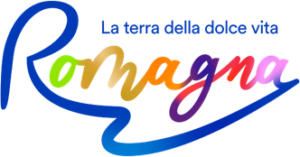Street Art in Ravenna has taken a leading role involving various areas of the city, from the Darsena area to some streets of the historical centre, in a sort of a public open-air art gallery.
With more than eighty works scattered around the city, Ravenna can be considered a small capital of street art and a reference point at a national level.
In a short time, the walls of Ravenna have changed their face: from the Darsena area to Porta Adriana, from the stadium to the Rocca Brancaleone fortress, the city has turned into a real open-air museum with works realised by Italian and international artists.
An important event for the world of street art in Ravenna is the “Subsidenze” Festival which, since 2014, has annually renewed the alliance among the municipal administration, young artists and cultural promoters, calling on internationally renowned professionals to leave their mark on the walls made available by the Municipality.
More and more people, especially young ones, thus come to Ravenna to admire from close up these stunning murals.
The Darsena area
As it is the core of a gradual urban regeneration project, the Darsena area is undoubtedly the area with the largest number of murals.
This densely populated area, poised between industrial archaeology and public housing buildings dating back to the ’70s, hosts many works of wall art.
Go for a walk, a bike ride or go around with an e-scooter and you will immediately see it for yourself.
The tour is very charming: it takes almost 2 hours to complete it on foot, almost 1 hour if you go by bike.
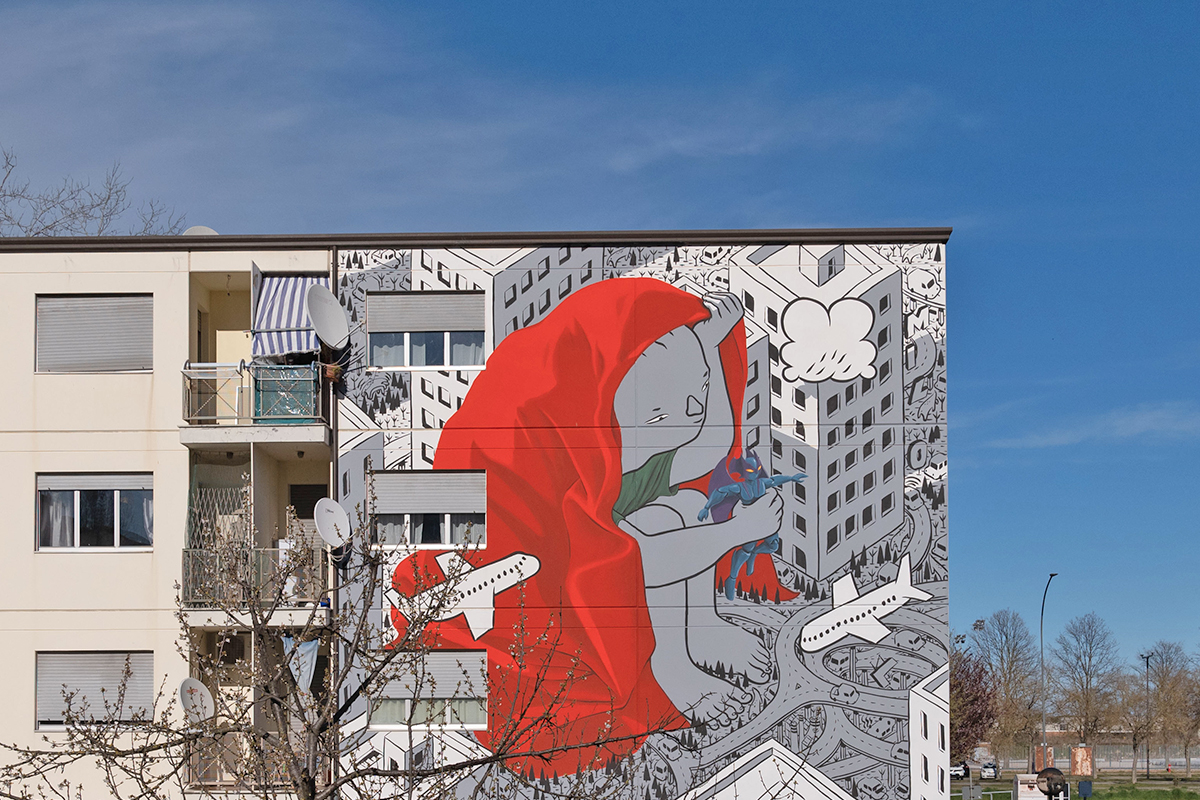
The main points of reference of the itinerary are: the Candiano Canal and the area around Artificerie Almagià and Darsena PopUp, Via Trieste and Via Tommaso Gulli.
We suggest a sort of ring route starting from the head of the Darsena and continuing onto via Grado, the so-called Cittadella della street art (lit. citadel of street art) – a working-class set of buildings located in via Gulli, just in front of the Pala de Andrè parking – and then back to via Trieste and the docks of the Darsena.
Along these streets, you will have the possibility to admire many works – some of them authorised, others not – by artists as Ericailcane, Bastardilla, Millo, Jim Avignon, Basik, Pixel Pancho, Qbic, Tellas, Camilla Falsini, Zed1, Dzia, Hope, Dissenso Cognitivo, Geometric Bang, About Ponny, Reve+, Exit Enter and many others.
The historical centre and other areas
Street art works can be admired all around Ravenna, from the historical centre to the sea, and not just in the Darsena area.
One of the most famous works (known both in Italy and abroad) is the portrait of Dante by the Brazilian artist Kobra, realised in only three days in 2016 on the external wall of the Primary School F. Mordani, in Via Pasolini. The work was realised with enamel paints, a compressor and a blowing gun, as if it was a big airbrush.
A unique, intense and very contemporary work that has become a must-see for tourists and citizens, and a symbol of Ravenna.
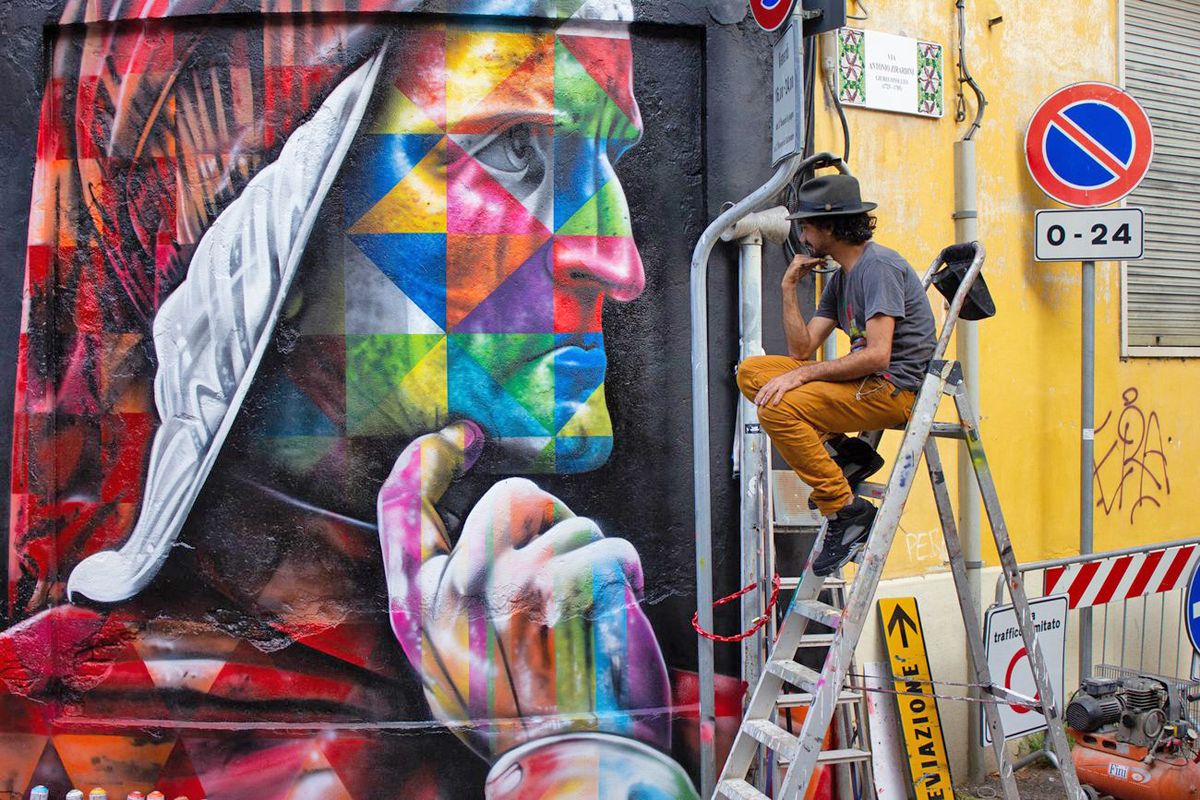
Then there is Invader, one of the world’s most famous artists to the pairs of Banksy, that has literally invaded the city over the past years.
The works of this artist are small coloured tiles inspired by the monsters and invaders of the videogame Space Invaders.
In Ravenna, it is possible to see 40 of them scattered around the territory. You can look for them and download the free app FlashInvaders, or read the catalogue of his exhibition “New Mosaic of Ravenna” – which is very rare and difficult to find – that Invader himself presented with an exhibition inaugurated in 2017 in Hong Kong.
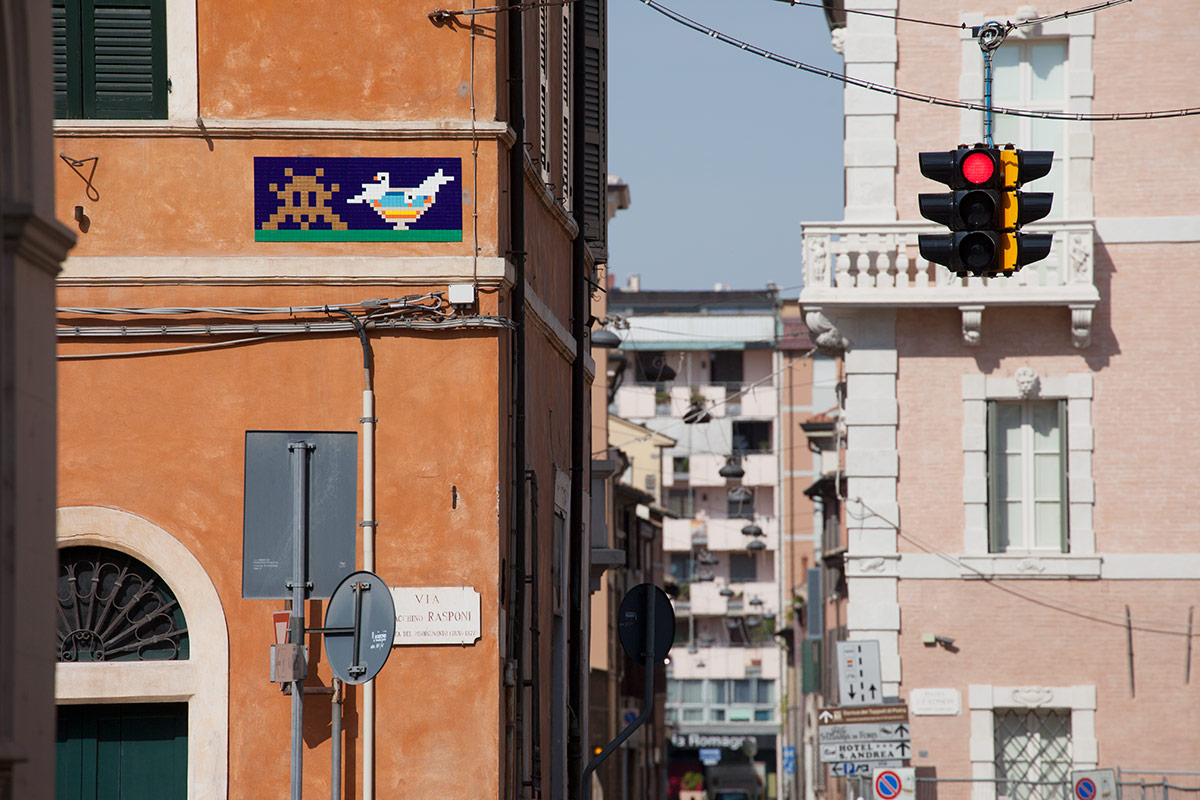
Then there’s BLUB, a worldwide famous artist from Florence known for the works of the series “L’arte sa nuotare“ (lit. art can swim), for which he realises portraits of famous people portrayed underwater.
His works, usually realised on sugar paper and sticked to the counters of the city, are almost 30 in the city, thus enriching the street art map of Ravenna.
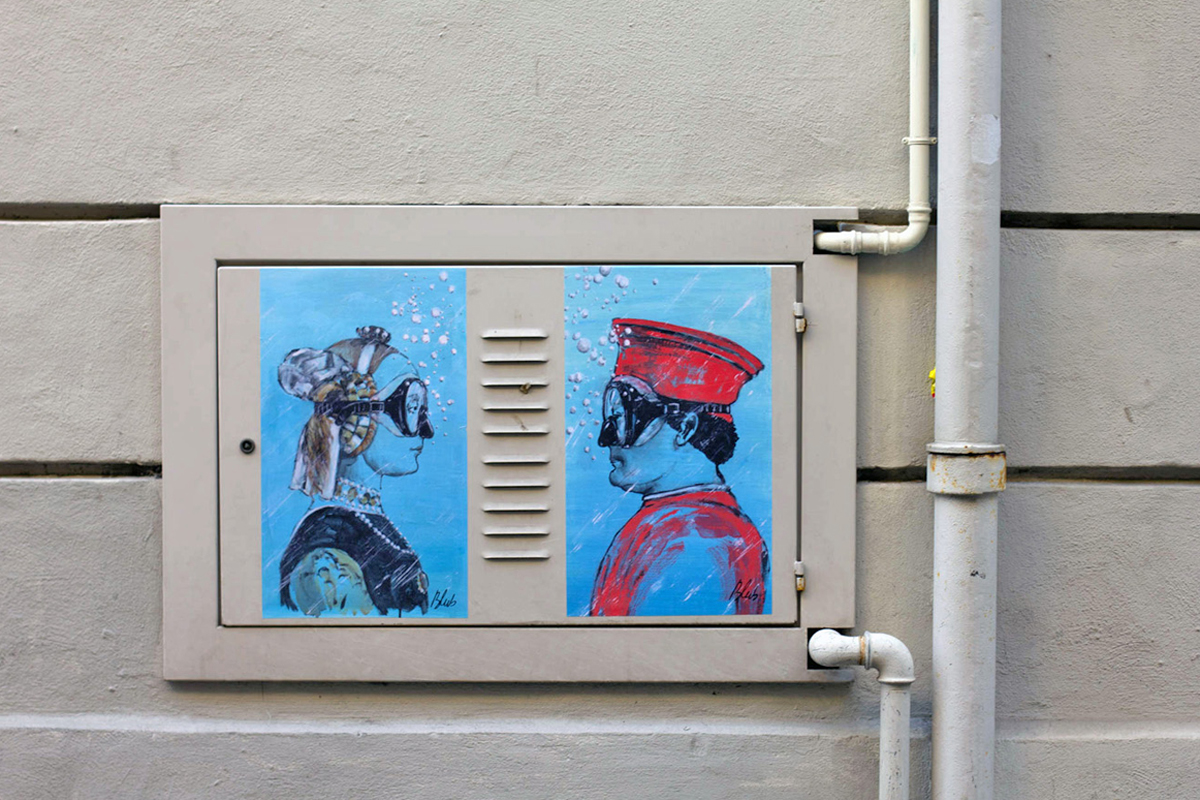
Ravenna is also home to the SuperWomen by Lediesis, two artists from Florence who realise their works with the technique of paste-up in studio and then paste them on the walls. They are now famous all over Europe for their reinterpretations of the women of the past.
Their iconic version of Frida Kahlo now winks at passers-by in Via Cavour, representing female empowerment and reminding us of the superpower of everyone of us, which just has to be found and taken out.
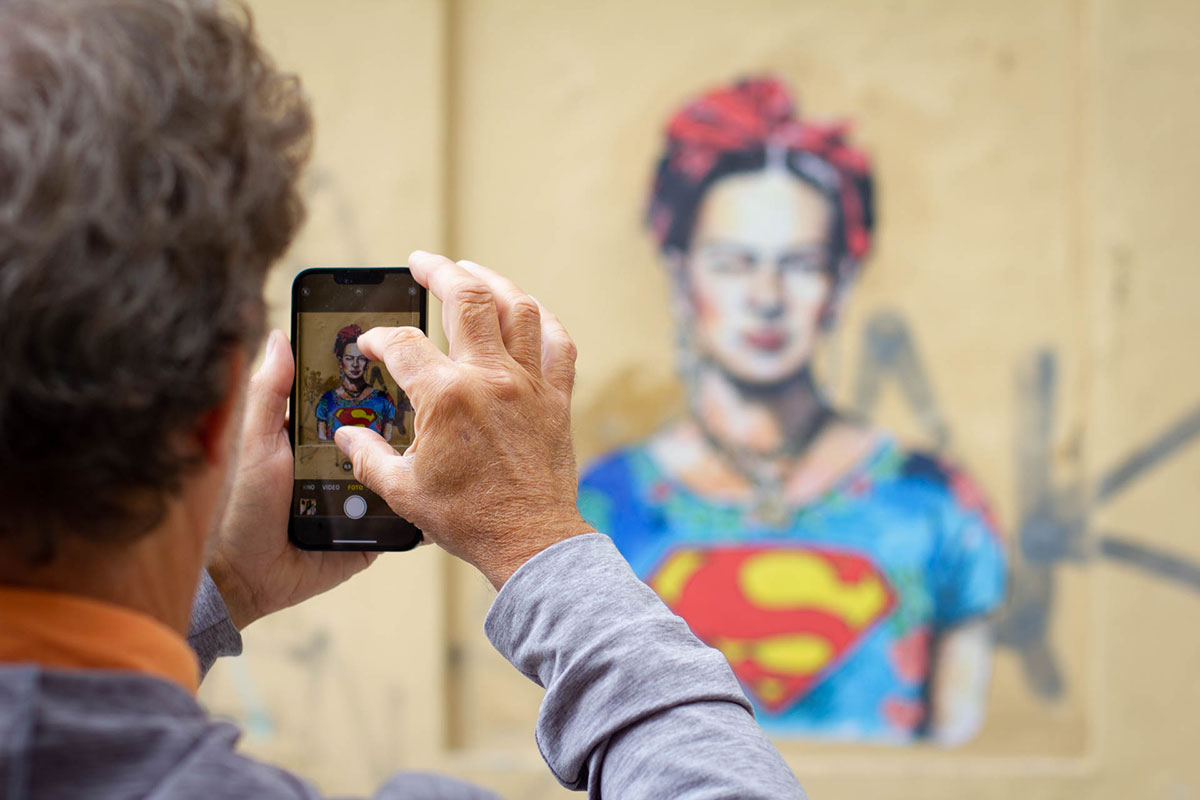
The city’s newest addition is a mural paying homage to Banksy by Giovanni Magnoli aka Refreshink, near the entrance of the MAR – Ravenna Art Museum. A mural that looks like mosaic reinterpreting The Flower Thrower, appeared in 2003 in Jerusalem on the wall separating Israel from Palestine. Right inside the MAR is a reproduction of Banksy’s work.
In his works, Magnoli focuses on Roman and Byzantine mosaic, ancient technique taken to the walls exclusively through painting; it is not a true mosaic made up of tesserae, but fields of colour creating an optical effect recalling mosaic.
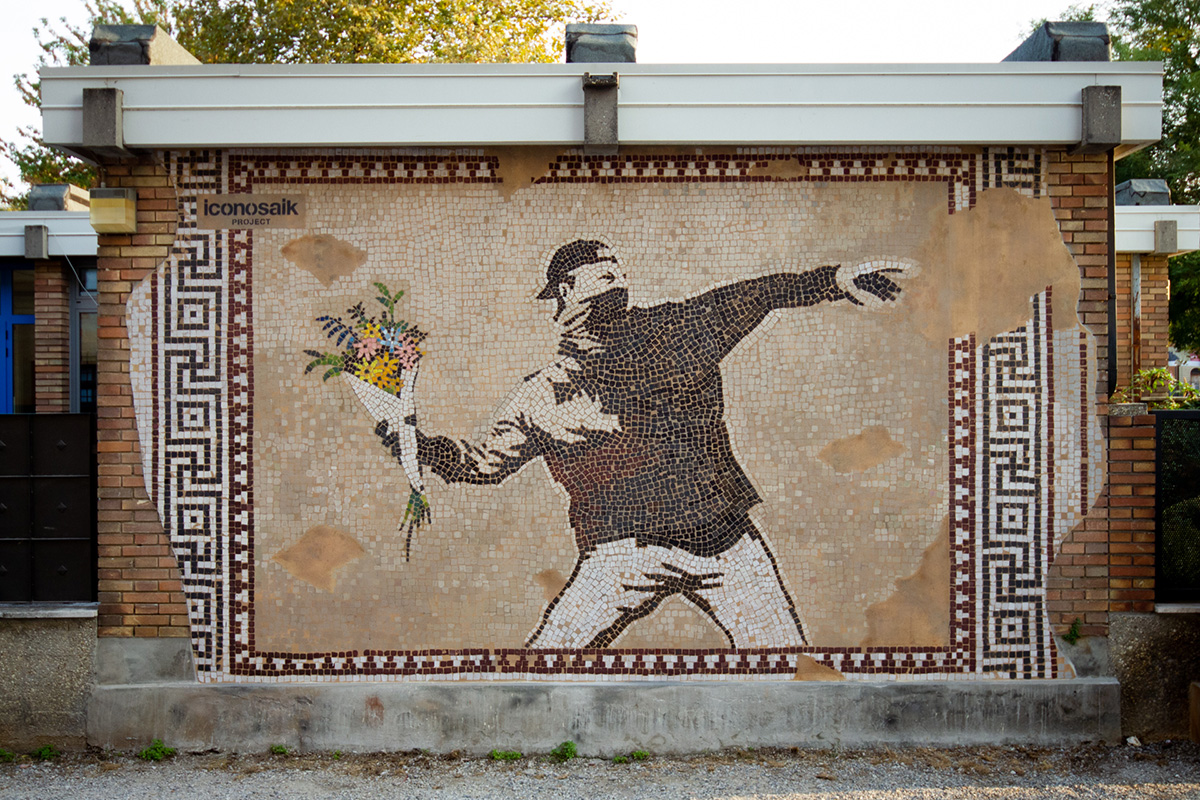
But street art in Ravenna is always changing.
The creative spirit of the former Byzantine capital is always alive and open to contemporaneity.
The result is a real invasion of art, forms and colours, which creatively rethinks urban spaces giving value to surfaces that would otherwise remain anonym and subject to a slow process od deterioration.
Parallel to the urban spaces, the Subsidenze festival managed by Associazione Indastria also promotes the latest trends of the Italian street art and the collection of works by the artists of the festival, by setting up group exhibitions or opening new spaces and initiatives, such as the collaboration of Bonobolabo, a brand founded in 2013 by Marco Miccoli and the more recent Magazzeno Art Gallery.
